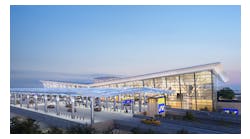30 Years After ANCA: Can Airports Live with New Community-Imposed Noise Restrictions?
In Colorado, Congressional lawmakers are considering a bill that would allow general aviation airports to impose new operational restrictions to reduce aircraft noise, including the ability to limit access to their facilities based on aircraft type and number. In similar fashion, a proposed California bill called the Restore Everyone’s Sleep Tonight Act of 2019 would enable airports to impose mandatory curfews and financial penalties against aircraft operators based on their community noise impacts.
These join a series of recently introduced bills that would provide local regulation over aircraft noise, and which have drawn staunch opposition from aviation advocates. However, increased Congressional intervention appears to be trending toward the future. For example, efforts are underway by a dozen U.S. Representatives to garner support for the Decrease Noise Level Act, which would lower the Federal Aviation Administration’s (FAA) Community Noise Equivalent Level (CNEL) of 65 decibels as the acceptable level of aircraft noise for persons living in the vicinity of airports.
All of these measures pose the threat of jeopardizing the national airspace system, weakening the economic base of communities and undermining the Aircraft Noise and Capacity Act (ANCA) of 1990. It is important to consider that ANCA was passed by Congress to shift responsibility for noise abatement away from local governments and airport sponsors, and to grant the FAA preemptive authority over the setting of noise levels and imposition of noise and capacity restrictions at airports. It was also believed that shifting toward a national solution would result in less litigation and more cooperation among airport stakeholders in regard to airport noise issues.
In simple terms, ANCA both required the phase-out of Stage 2 aircraft weighing more than 75,000 pounds and regulated an airport’s ability to operationally restrict Stage 2 and Stage 3 aircraft.
It also made airports seeking to limit or restrict the operation of Stage 2 or Stage 3 aircraft for noise mitigation purposes subject to FAR Part 161 regulations, which provide a study methodology for airports to prove to the FAA that an exception to ANCA is warranted.
The consequences for airports that fail to comply with ANCA are severe. If an airport adopts a noise or access restriction without following regulation, it may lose eligibility for Airport Improvement Program grants and access to Passenger Facility Charges. To date, no airports have successfully received approval from the FAA to impose noise restrictions, such as a mandatory curfew, through the FAR Part 161 process.
In December, a coalition of industry groups – ranging from general aviation organizations to airline associations – partnered to express opposition to H.R. 5423, the Aircraft Noise and Reduction Act (ANRA), which seeks to give local officials the ability to severely restrict access to general aviation airports. In a letter to the U.S. House of Representatives Committee on Transportation and Infrastructure and other members of Congress, nine trade associations said the proposed legislation would severely undercut the utility and safety of thousands of airports across the nation and reverse course on the need to regulate aviation matters at the federal level.
In light of political intervention and limited post-ANCA options, how can airports and communities work together to meet this challenge?
Today, advances in technology allow manufacturers to build quieter, more efficient aircraft with less noise impacts on airport neighbors. In addition, effective noise restrictions — including many that were introduced prior to ANCA — have enabled airports to successfully reduce their noise impact boundaries. However, communities across the U.S. are placing increased pressure on legislators to respond to what they perceive as a growing airport noise problem.
Perhaps one contributing factor is that new residents who have not previously lived near an airport are moving into neighborhoods impacted by aircraft noise. These newcomers are often unaware of advances in technology that have made aircraft quieter or of an airport’s proven voluntary and mandatory noise management programs.
A second and major contributing factor to a rise in community noise concerns is implementation of the FAA's Metroplex Program, a national effort to safely improve airspace efficiency by utilizing satellite-based navigation technology. The publication of revised area navigation procedures (RNAV) by the FAA has, in many cases, pushed air traffic over communities not previously impacted by these operations and increased residents’ sensitivity to aircraft noise.
Clearly, the tools available to address noise concerns associated with airport and aircraft operations remain limited. Failing to address this issue with the community could damage an airport’s ability to work collaboratively with key stakeholders on other issues affecting healthy operations and growth. Alternatively, attempting to restrict aircraft operations to mitigate noise could draw opposition from airport users and operators, industry groups and the FAA. Finding a balanced solution is a daunting task.
Los Angeles’ Van Nuys Airport (VNY), for example, has a long history of adopting aggressive noise mitigation programs well ahead of the general aviation industry. These include implementation of a mandatory partial nighttime jet departure curfew with a financial penalty structure in 1981 and adoption of a noisier jet phase-out in 2009 that is more stringent than the national Stage 2 phase-out passed by Congress in 2012. Through a combination of mandatory noise restrictions, a major residential soundproofing program and other voluntary programs relying on extensive pilot education, VNY operates without a noise variance from the state.
Despite these industry-leading accomplishments and largely as a result of revised RNAV procedures implemented by the FAA, some local residents are pushing to implement a voluntary nighttime curfew on all VNY operations. However, airport businesses contend such a measure would raise unrealistic expectations in the community and unfairly label tenants who comply with established noise restrictions as violators.
As an alternative, the Van Nuys Airport Association, a non-profit tenant membership group, is working closely with airport staff to enact a voluntary Preferential Jet Departure Program. Through this initiative, aircraft operators are requested to indicate their commitment to reducing nighttime jet departures to the fullest extent possible via a formal letter of agreement. Key elements of the program are the development of tenant best practices and extensive outreach to aircraft operators.
As an alternative, the Van Nuys Airport Association, a non-profit tenant membership group, is working closely with airport staff to enact a voluntary Quieter Nights Program to reduce nighttime jet operations to the fullest extent possible. Key elements include the development of tenant best practices, plus extensive and ongoing outreach to aircraft operators. To increase incentives for compliance, this program will be incorporated into Van Nuys Airport’s existing Friendly Flyer Awards Program.
Clearly, the post-ANCA, post-Metroplex noise relief sought by some residents ultimately requires FAA action. ANCA attempted to create a comprehensive method for regulating aircraft noise by shifting authority away from local governments and airport proprietors to protect the integrity of the national airspace system. Imagine what would happen to our nation’s system of highways if every vehicle off-ramp had its own access restrictions or curfew. In addition to having a severe negative impact on jobs, businesses and the economy, environmental justice issues would be raised in communities bearing heaviest traffic. With over 5,000 public use airports in the U.S., changing regulations for a few airports could place unwarranted pressure on thousands of others.
Ultimately, the FAA is responsible for the safe and efficient use of the national airspace system. Community recommendations regarding changes to air traffic rules, the use of airspace or the control of air traffic must be addressed at the federal level. Airports may resolve policy issues related to new or modified noise restrictions by either litigation (i.e., filing a lawsuit against the FAA) or regulation (i.e., initiating an FAR Part 161 Study). As demonstrated by VNY, it is much more prudent to provide airport tenants, users and operators the opportunity to work collaboratively with the community on voluntary programs that are feasible, reasonable and based on a past history of success. \
Curt Castagna, president and CEO of Aeroplex/Aerolease Group, is a member of the Los Angeles County Airport Commission, president of the Van Nuys and Long Beach Airport Associations, and board chair of the National Air Transportation Association. A certified private and instrument-rated pilot, he has instructed courses in aviation administration at Cal State Los Angeles for over two decades.



